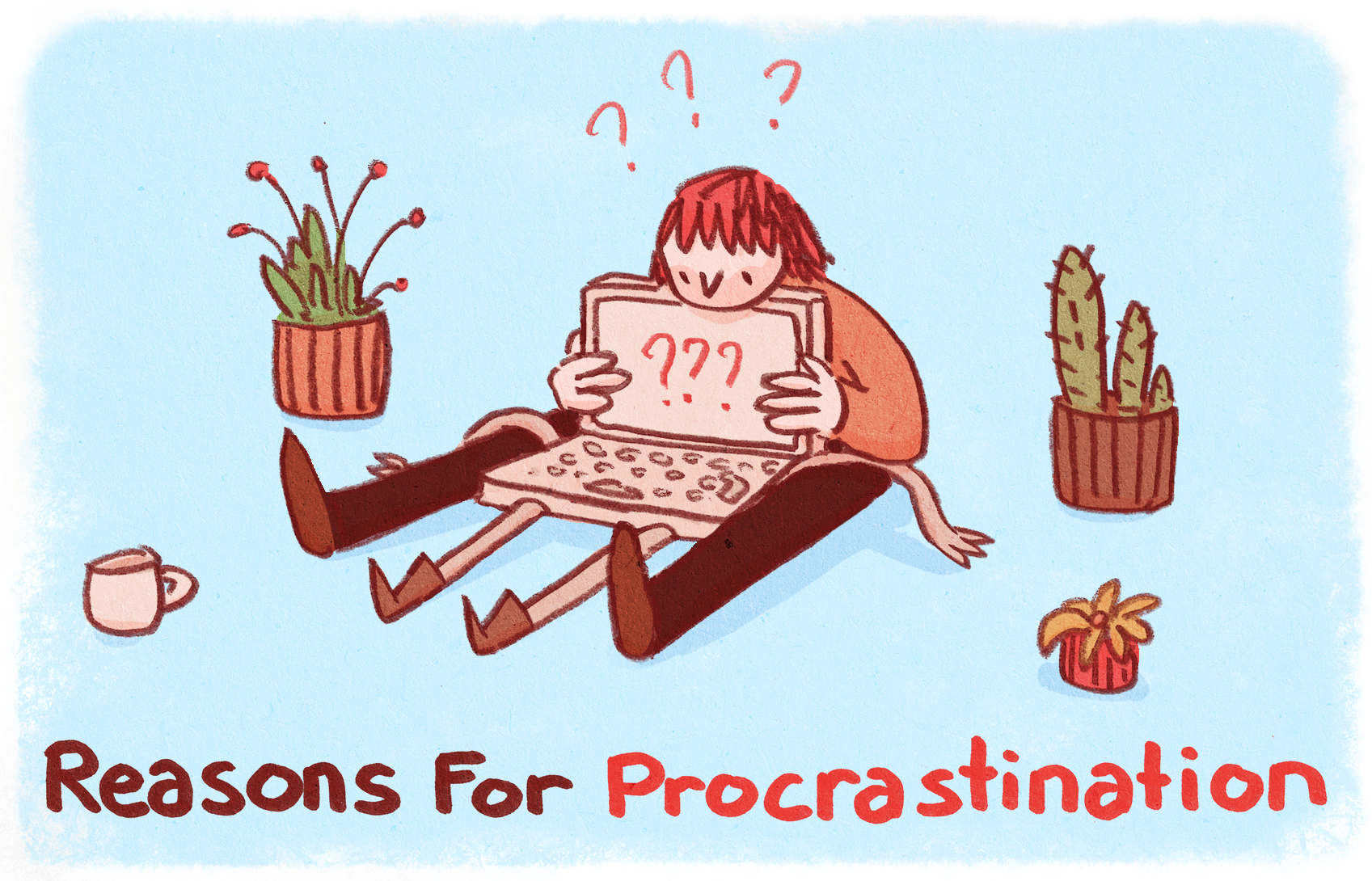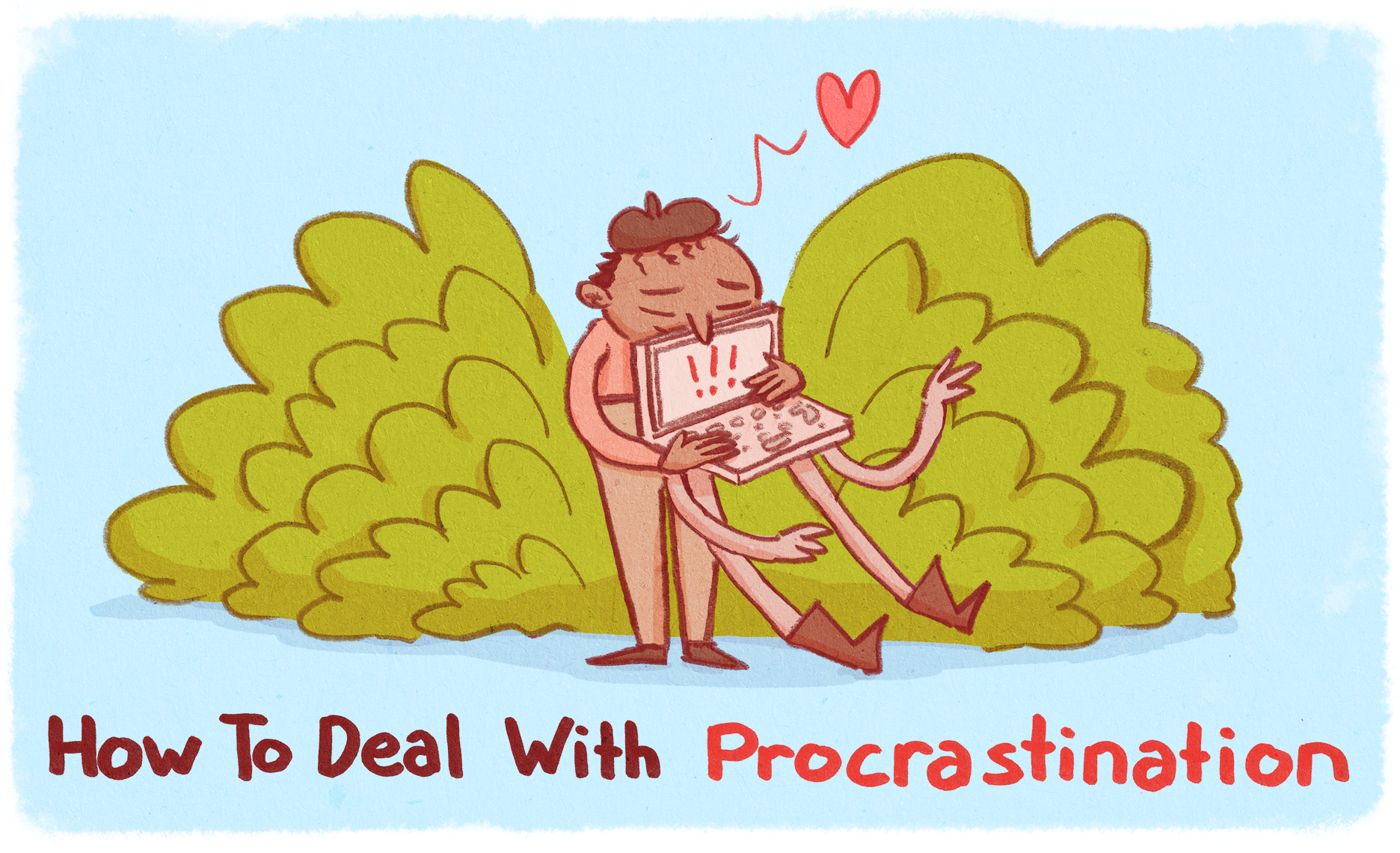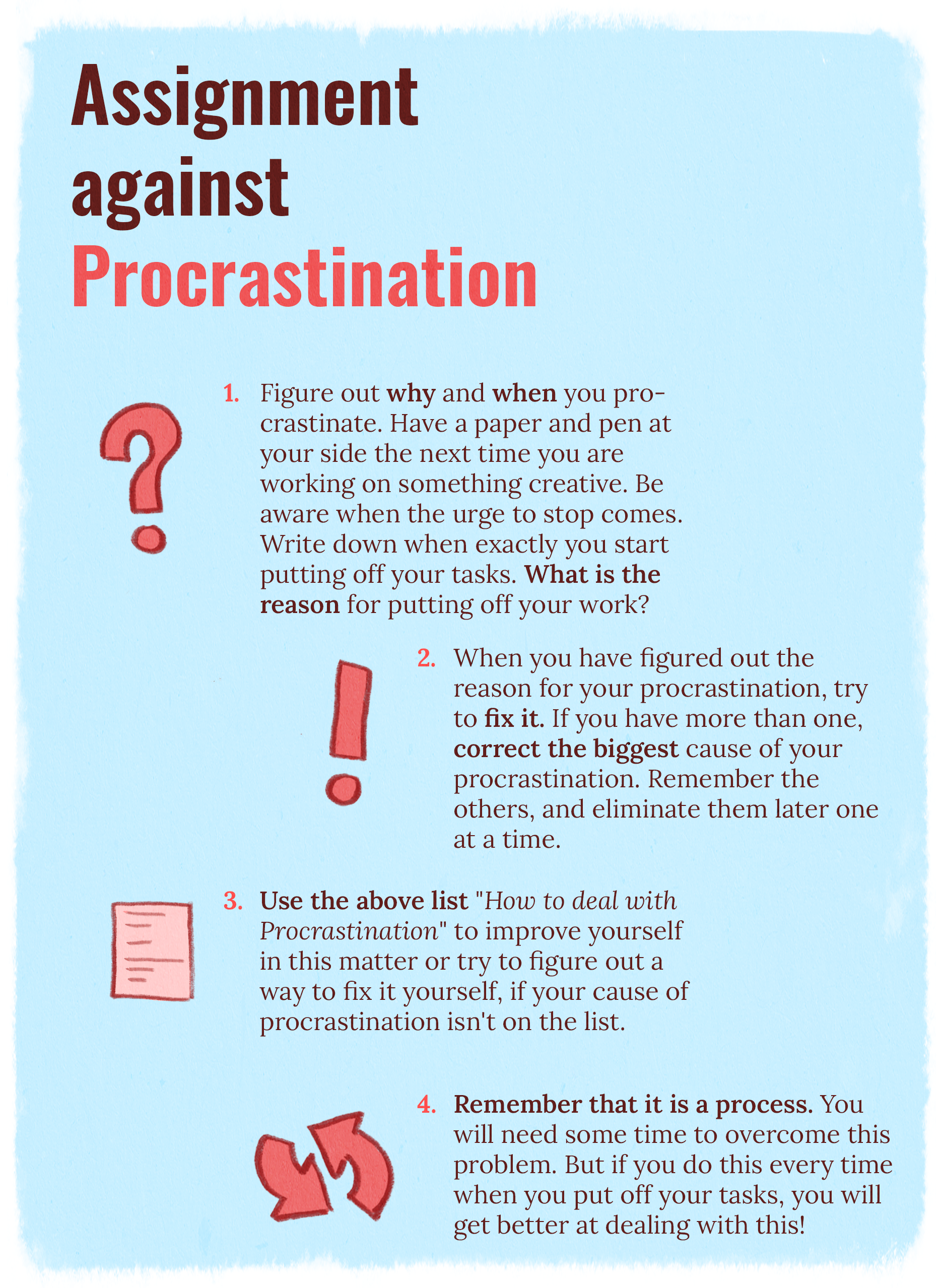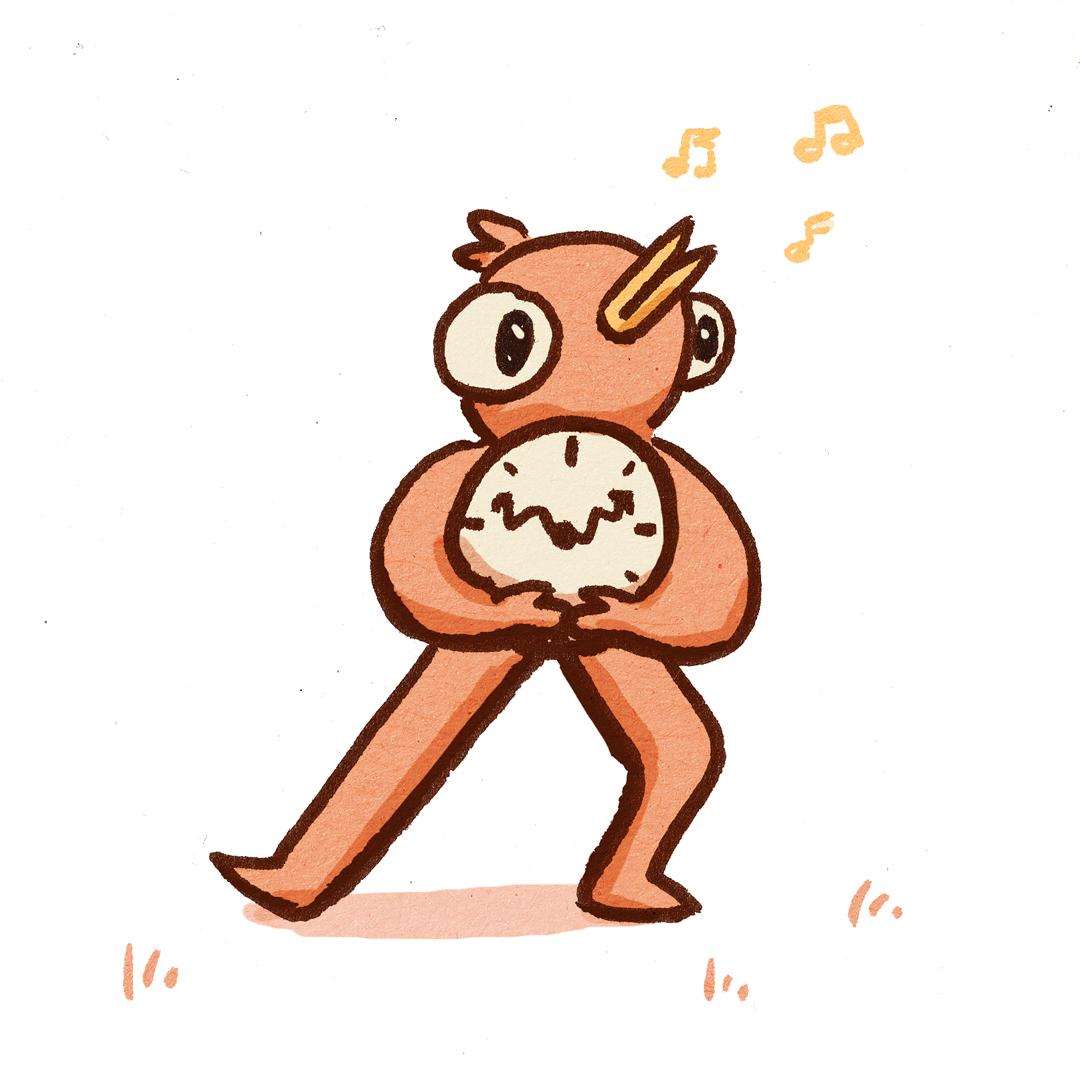
The “Distraction Stop Checklist” will help you if you’re easily distracted by things you don’t want. This will help you get started on your creative projects. It includes tips on how to prepare your environment, some obvious tips like turning off your phone, or a really nice way to get distracting thoughts out of your system. Yeah, you know it: Write down your thoughts and questions like “How deep can an elephant dive?” and later on a break, go back to your thoughts and questions and search for them if needed (They can dive 6 meters if you had that specific question).
Print out the checklist and put it somewhere in your workspace. For example on a wall so you have a “Don’t Get Distracted”-Wallpaper right in front of you. Each time before you start, you can use this tool for a distraction-free work session. Go through it and do everything you can that is on the list. The more you do on the list, the better you will be able to work without anything (or anyone) interrupting you. So you can do the work you need to do in the best possible way.
You can download the High Res PDF “file “Don’t Get Distracted”-wallpaper down below (past the JPG picture).
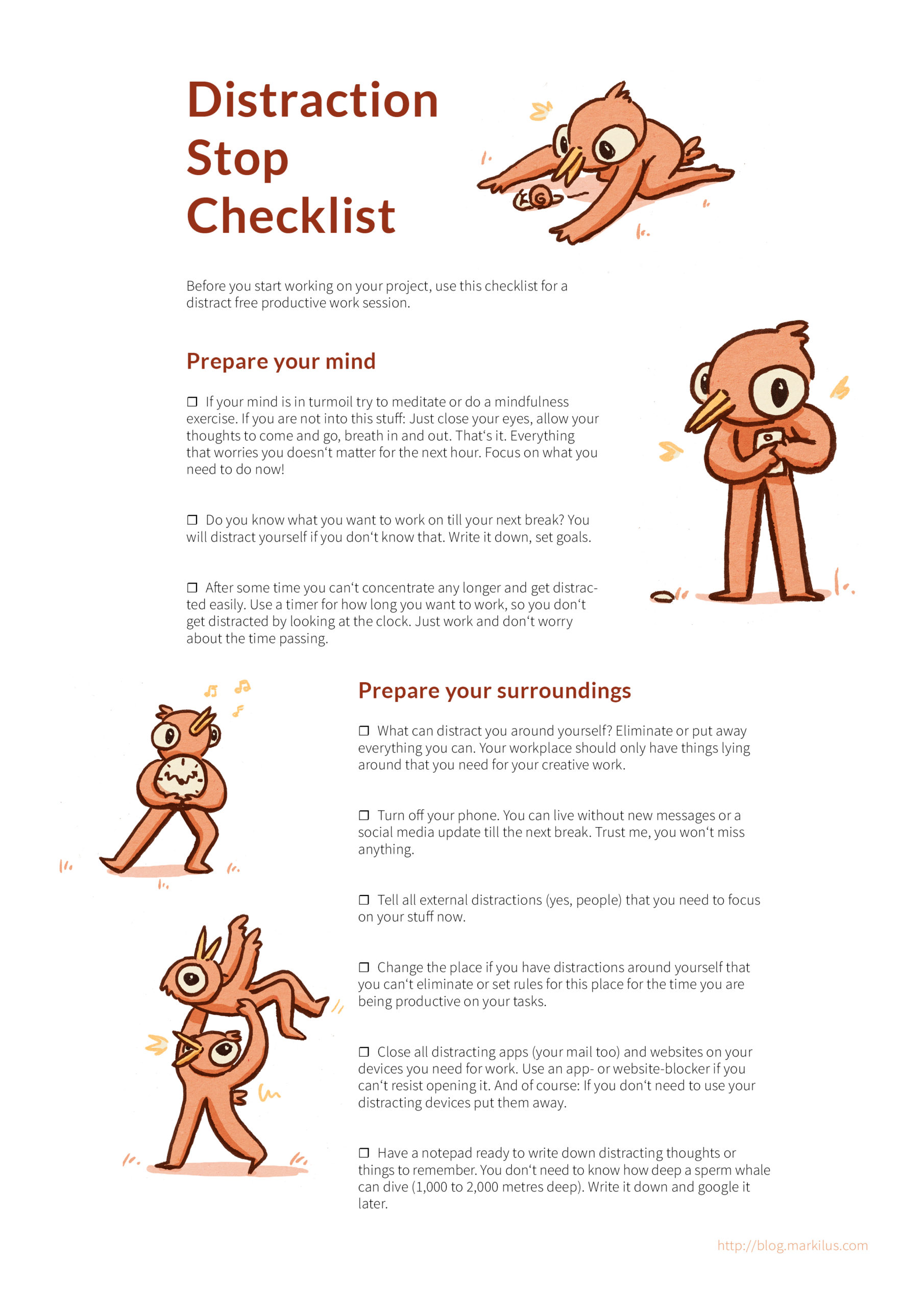
The Distraction Stop Checklist PDF aka “Don’t Get Distracted”-Wallpaper
Here is the download of the bigger PDF file for the checklist:
Here’s the slightly edited “How To Not Get Distracted”-Checklist in text form.
How To Not Get Distracted
Before you begin your project, use this checklist to ensure a distraction-free, productive work session.
Prepare your mind
- If your mind is a mess, try meditation or a mindfulness exercise. If you’re not into that sort of thing: Just close your eyes, let your thoughts come and go, breathe in and out. That’s it. Anything that’s bothering you doesn’t matter for the next hour. Focus on what you have to do right now!
- Do you know what you want to work on until the next break? If you don’t, you will distract yourself. Write it down, set goals.
- After a while, you won’t be able to concentrate and you’ll be easily distracted. Use a timer for how long you want to work so you don’t get distracted by looking at the clock. Just work and don’t worry about the time.
Prepare your environment
- Eliminate or put away anything that might distract you. Your workspace should consist of only what you need to be creative.
- Turn off your phone. You can live without a new message or social media update until your next break. Trust me, you won’t miss a thing.
- Tell any outside distractions (yes, people) that you need to focus on your stuff right now.
- Change locations if you have distractions around you that you can’t eliminate, or set rules for that location for the time you are productive on your tasks.
- Close all distracting applications (including your email) and websites on your devices that you need for work. Use an app or website blocker if you can’t resist opening them. And of course: If you don’t need to use your distracting devices, put them away.
- Keep a notepad handy to jot down distracting thoughts or things to remember. You don’t need to know how deep a sperm whale can dive (1,000 to 2,000 meters). Write it down and Google it later.
If you have any questions or advice for a better list, then you can contact me via email or here. I would love to hear from you!
Additional Resources
Here are some additional external resources about stopping distractions if you are interested:
- Jay Shetty ON 6 Ways to Stop Getting Distracted
- Doing Creative Work When You Can’t Stop Looking at Your Phone
- How to reduce distractions while creating
Want to get more help? Here’s my good old newsletter which you will receive whenever I’m in the mood to write one. At the moment every 4 months or so. I’ll give you some tips for working on creative stuff and probably will plug some stuff if I have anything new.
